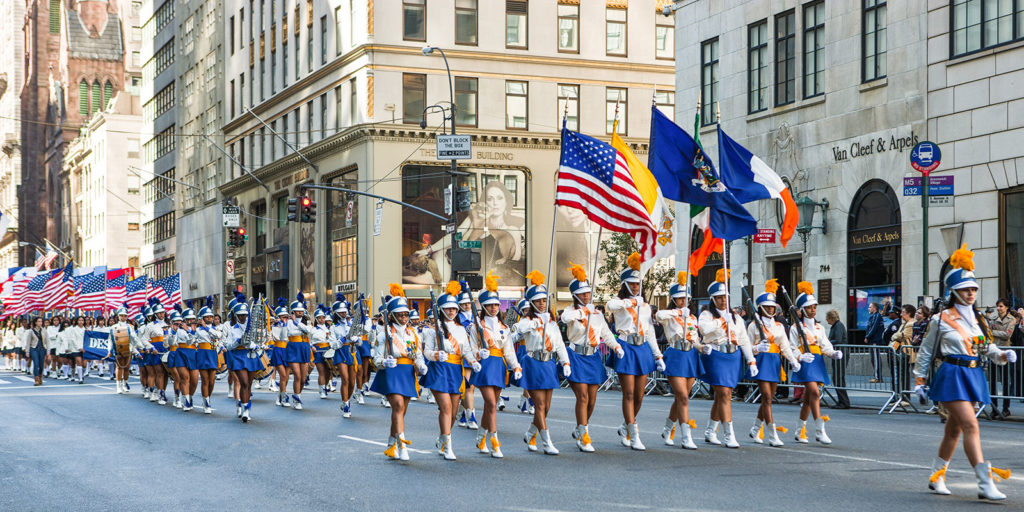Hispanic Heritage Month is an annual U.S. government celebration of the Hispanic contributions to our American culture from September 15 – October 25.
The contributions are great. The western third of our country was New Spain and then Mexico before it was the United States. Hispanic culture remains embedded there.
Spain played a major role in the recovery of western civilization during the Middle Ages. The combination of Muslim leaders, Jewish poets and a Christian populace together recovered the legacy of western civilization from the Islamic libraries of the eastern Mediterranean.
We couldn’t be who we are today without our Hispanic heritage.
Why is Hispanic Heritage Month in the Middle of the Month?
It is a little odd that Hispanic Heritage Month starts in the middle of the month. It was set up this way to include the independence days of several North American, Central American and South American countries, along with the anniversary of the “discovery” of the Americas by Christopher Columbus.
- September 15 is independence day in Costa Rica, El Salvador, Guatemala, Honduras and Nicaragua.
- September 16 is Mexico’s independence day (no, it’s not Cinco de Mayo).
- September 18 marks the “18th Mierda,” Chile’s independence celebration.
- On October 12, 1492 Christopher Columbus claimed the Americas for the Europeans
- October 12 is Spain’s national day
What is Hispanic?
The term Hispanic is complicated. Some think “Hispanic” refers to countries with a Spanish heritage.
Some think “Hispanic” includes Portuguese heritage. Most Brazilians do not consider themselves “Hispanic.”
“Latin” is a French term that includes the Latin Europeans (Italian, French, Spanish, Portuguese, and Romanian) and Latin Americans.
“Latino” means “Latin man” or “Latin people” in Spanish. In popular usage in the United States, Latino has come to mean Mexican-American. New York City has large Caribbean and South American populations who are considered Latino as well.
What you consider Hispanic probably has more to do with your own heritage and education, and the biases that come with that.
What is our Hispanic Heritage?
When a crew member in the expedition of Christopher Columbus spotted land on October 12, 1492, he set in motion a world-changing series of events.
The Italian Columbus claimed the New World for his Spanish patrons. This brought the English, French and Portuguese. The collision of civilizations decimated the Native American population and brought Africans to the Americas.
Spanish language, culture, and religion spread across much of the Americas, including the western third of what is now the United States. Though not strictly Hispanic, French language, culture, and religion spread across what is now Quebec, Canada and down the Mississippi River through the center of the United States to New Orleans.
In South America, Portuguese language, culture, and religion spread across what is now Brazil.
Contemporary identity tends to be based on the last colonial power in a region. So though the Spanish were the original colonizers, Americans of the U.S. and Caribbean nations like Jamaica and Trinidad and Tobago, consider England to be their mother country.
Cuba was the last possession of the Spanish Empire and the first possession of the American one.
The United States has a Deep Hispanic Heritage
Do you drink orange juice in the morning? Spanish conquistadors planted the first orange trees in Florida. They did this to protect Spanish sailors from scurvy, a disease caused by Vitamin C deficiency.
The oldest continuously settled city in the United States is St. Augustine, Florida. St. Augustine was founded by Spanish explorer Juan Ponce de Leon. He was searching for the Fountain of Youth.
The American Southwest was Spanish and Mexican before it was American. That is about one-third of our country.
Hispanic Heritage Today
The Pew Research Center estimates the U.S. Hispanic population in 2016 at 57 million or 18% of the U.S. population. That is probably an underestimate because many Americans with a Hispanic heritage identify themselves as Caucasian.
Hispanics are the second-fastest-growing ethnic group in the United States. These numbers are making all Americans take notice.
Hispanic Heritage Month is important for those of us who have a direct Hispanic heritage. But it is probably more important for those of us Americans who are not Hispanic.
In life, it is important to know yourself. Our country is already at least 1/5 Hispanic. That is two fingers out of your ten. It’s worth knowing who we are, and who we are becoming.

